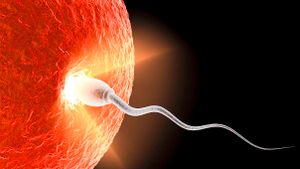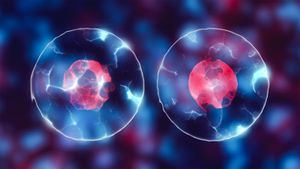Delivering Sperm Cells
As we mentioned on the last page, sperm are made in the testes. During sexual intercourse, smooth muscles contract and propel mature sperm from the end portions of the epididymis through a long tube called the vas deferens, which is inside the body, just beneath the bladder. From there, the sperm get mixed with nutrient-rich fluids from the seminal vesicles and a milky secretion from the prostate gland. This combination of sperm and fluids is called semen. The semen does three things:
- Provides a watery environment in which the sperm cells can swim while outside the body
- Provides nutrients for the sperm cells (fructose, amino acids and vitamin C)
- Protects the sperm cells by neutralizing acids in the female's sexual tract
Once the semen is made, it passes through the urethra, which is within the penis, exiting the body through a small slit at the tip of the penis in a process known as ejaculation. The average ejaculate contains about one teaspoon of seminal fluid, and only one percent of the mixture is sperm [source: Angier].
Advertisement
One last male reproductive organ is a tiny, pea-sized set of glands inside the body at the base of the penis, called the bulbourethral or Cowper's glands. During sexual excitation, and just prior to the ejection of sperm, the Cowper's glands secrete a tiny amount of fluid that neutralizes any traces of acidic urine that may be leftover in the urethra. It is also believed that these secretions are designed to lubricate the penis and female tract during sexual intercourse.











